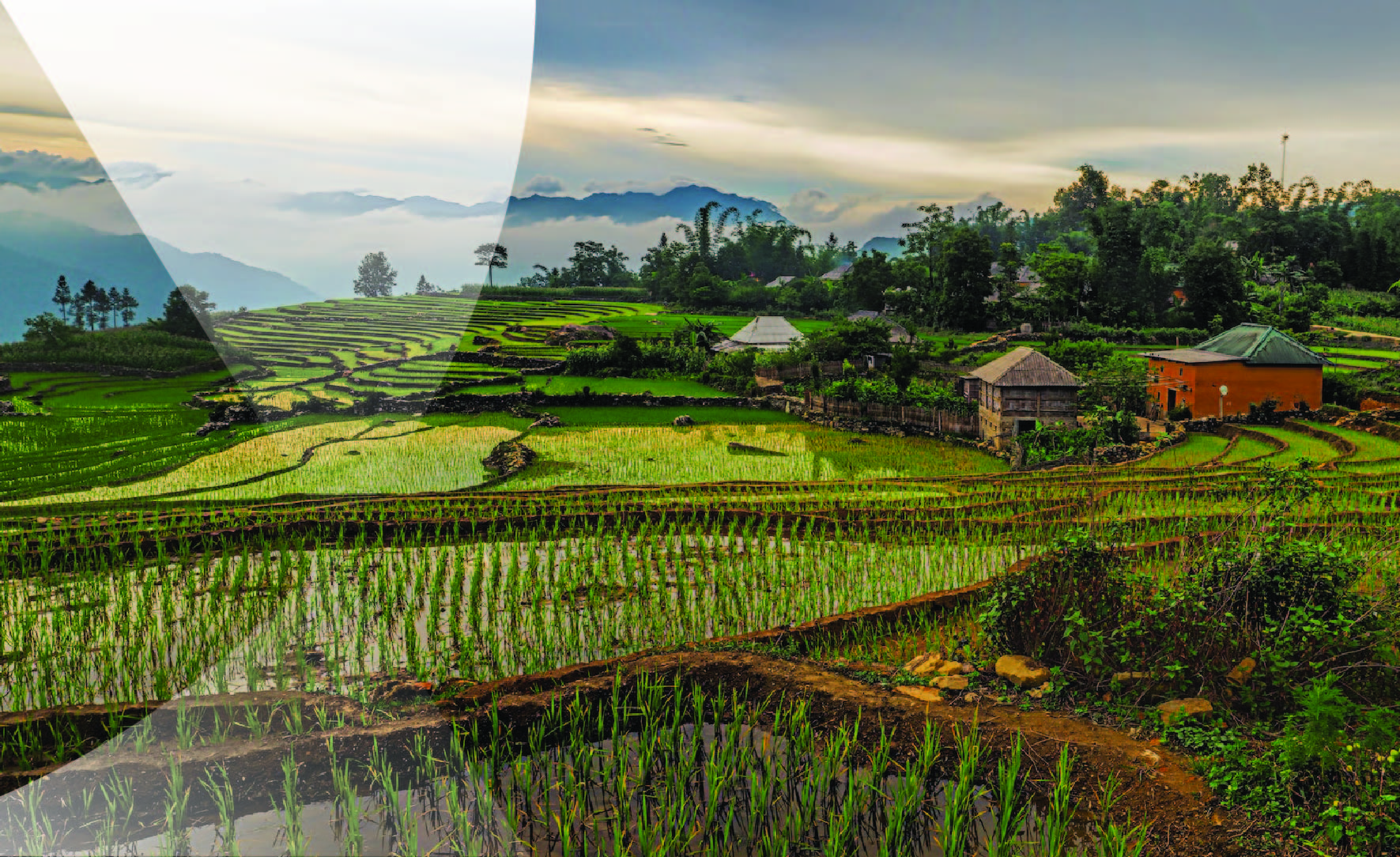Despite the rhetoric of the “global” goal established in the Paris Agreement, adaptation to climate change is still seen as a domestic issue. But since climate impacts – and the effects of adaptation measures themselves – cascade across national borders and drive systemic risk globally, we need to plan adaptation accordingly.
Farmland in Vietnam. Photo Credit: Peter Hammer / Unsplash
Five years ago, the Paris Agreement established the Global Goal on Adaptation, which aimed to raise ambition on adaptation by framing it as a “global challenge” with “international dimensions”.
There has, however, been little progress since 2015 to translate this ambition into tangible action. Despite our increasingly warmer world, adaptation doesn’t receive the political attention it warrants, nor does it garner levels of financial investment commensurate with the scale of the challenge.
As we look to the challenges we face – from climate change to migration to terrorism to the downsides of globalisation – there is no doubt in my mind that global challenges require global solutions… No country can do it alone. We need multilateralism more than ever.
António Guterres, United Nations Secretary-General
Could current calls for a reinvigoration of multilateralism, championed by the UN Secretary-General and others, also signal the start of a new era for adaptation – one marked by the global cooperation and spirit of solidarity that the goal aimed to inspire?
The Global Goal on Adaptation sets out to enhance adaptive capacity and strengthen resilience, with a view to reducing vulnerability and contributing to sustainable development. It requires all parties to engage in and communicate their efforts to plan and implement adaptation.
Despite the goal’s global rhetoric, however, adaptation is still treated as a domestic issue – largely planned and implemented in geographic silos – seemingly built on an assumption that national efforts alone can deliver sufficient protection.
Yet in reality, climate impacts – and the effects of adaptation measures themselves – cascade across national borders and drive systemic risk globally. It is time we planned adaptation accordingly.
The COVID-19 pandemic has revealed with startling clarity the vulnerabilities inherent in a globalized world and the speed with which risk propagates through international systems and cascades across sectors and borders. It is becoming increasingly clear that one country’s resilience is the product of all countries’ resilience.
But COVID-19 has also reminded us of our interdependence, potentially inspiring an urgently-needed renewal in our appetite for multilateral solutions to humanity’s common challenges. As the newly elected UN Assembly President Volkan Bozkir noted at a commemoration of the institution’s 75th anniversary this year, multilateralism remains, as ever, “not an option, but a necessity“.
Such a recognition could provide much-needed impetus for meeting the global challenge of adaptation. Today, multilateral cooperation on adaptation is, in the eyes of many, limited to questions of finance. True substantive cooperation to reduce shared climate risks is not only lacking in practice, it is rarely even articulated as an objective. So what might a multilateral approach to realizing the Global Goal on Adaptation entail?
Donor countries must recognize that adaptation is not a single, standalone issue, and that their support for other countries’ efforts should not be undermined by the effects of their policies on (for example) trade, finance, migration or security. The Sustainable Development Goals provide a framework for addressing this.
Genuine leadership is needed to establish, and hold together, new coalitions in order to advance an ambitious global adaptation agenda, starting at COP26 in Glasgow. Smaller, open economies, at all levels of development, who have the most to lose from a breakdown in multilateralism, should join together to set out and pursue this vision.
Adaptation efforts must be aligned with International Law to prevent transboundary harm, requiring a paradigm shift in the way adaptation plans are appraised. Rather than each actor’s plans being formulated and reviewed in isolation, the potential negative effects of one country’s domestic adaptation on others need to be identified and addressed – ideally by National Adaptation Plans, Adaptation Communications and the first Global Stocktake in 2023.
A multilateral approach to adaptation is no guarantee of a just or equitable outcome. Transparent and inclusive approaches to global adaptation negotiations are vital and the outcomes of adaptation at all scales should be fair and leave no one behind. This requires a specific focus on the cross-border effects of climate change and adaptation in multilateral processes so that inequalities do not increase as a result of adaptation.
Food systems are severely threatened by climate change and global trade in food commodities is important for most countries. The current food system operates in a way that drives vulnerability for many communities, and reform is needed. It is also a crucible where public and private climate risk management strategies and market forces meet. The UN Global Food Summit 2021 presents an opportunity to advance the cause of adaptation beyond the UNFCCC and strengthen the systemic resilience of our global food system.
Continuing to treat adaptation purely as a domestic concern undersells the vision of the Paris Agreement and prevents us from harnessing the benefits of multilateralism in order to pursue it. Adapting to climate change is in all our interests and building a resilient world for all is a common goal. It is time for a new kind of cooperation on adaptation.
Design and development by Soapbox.


